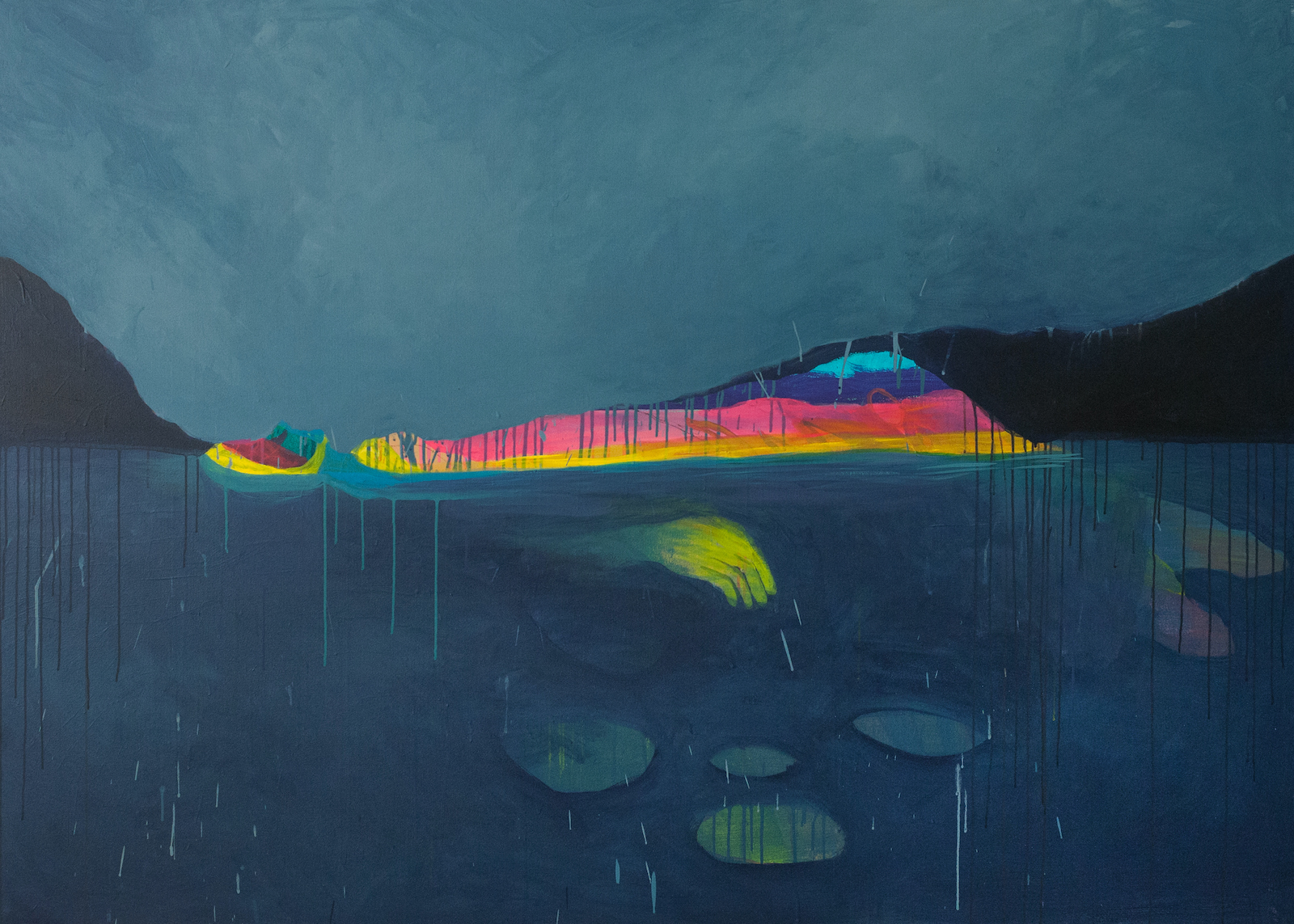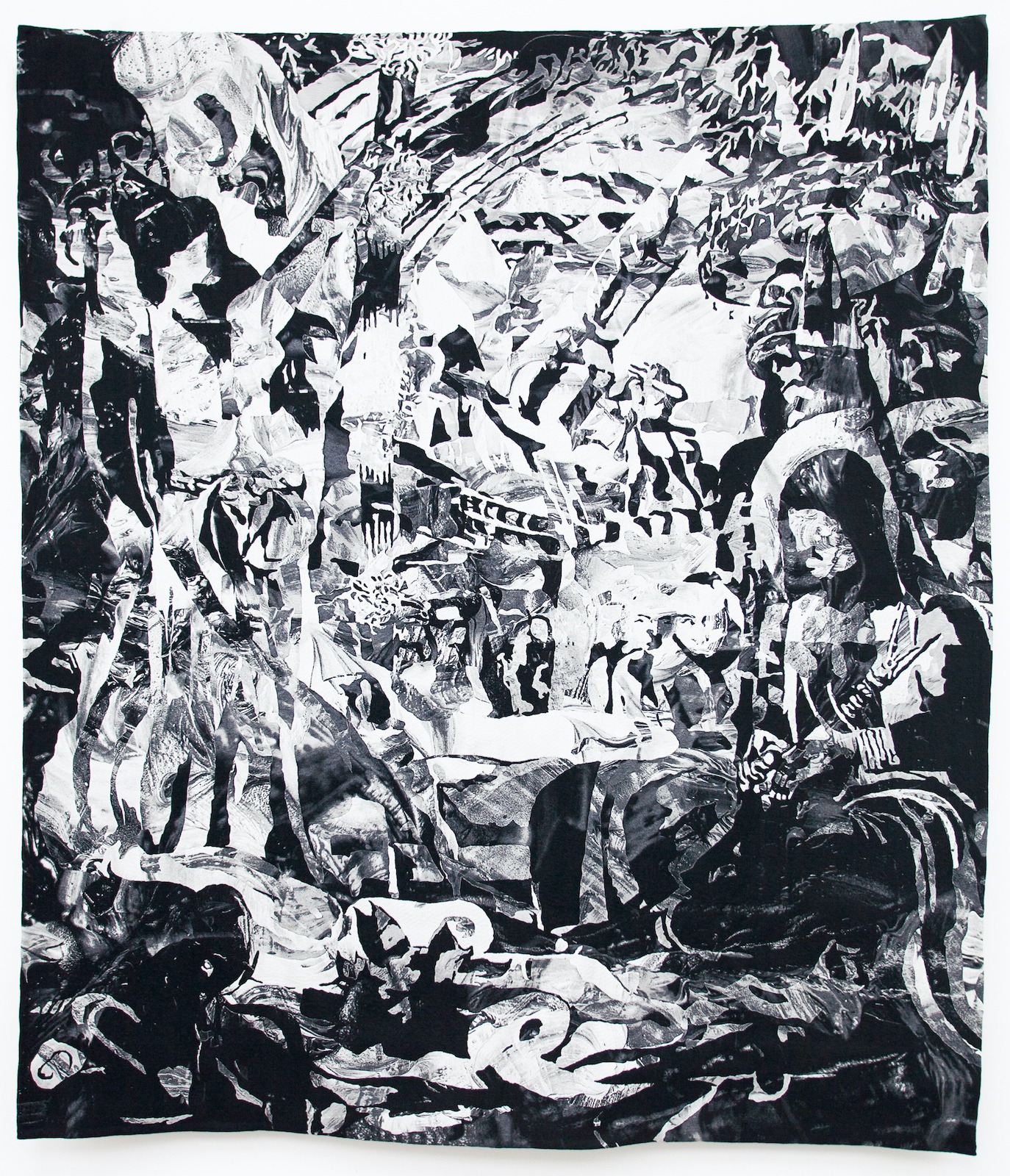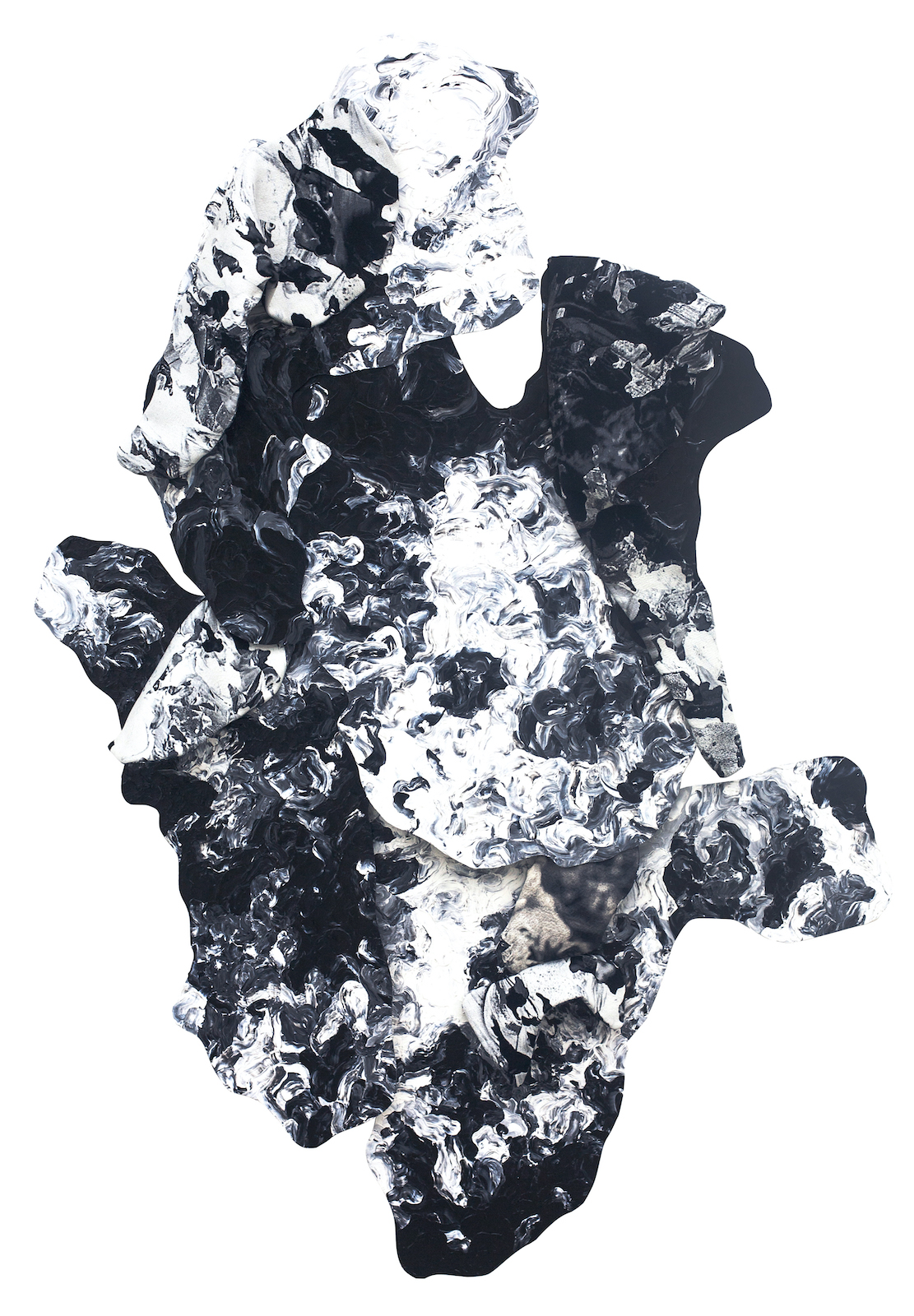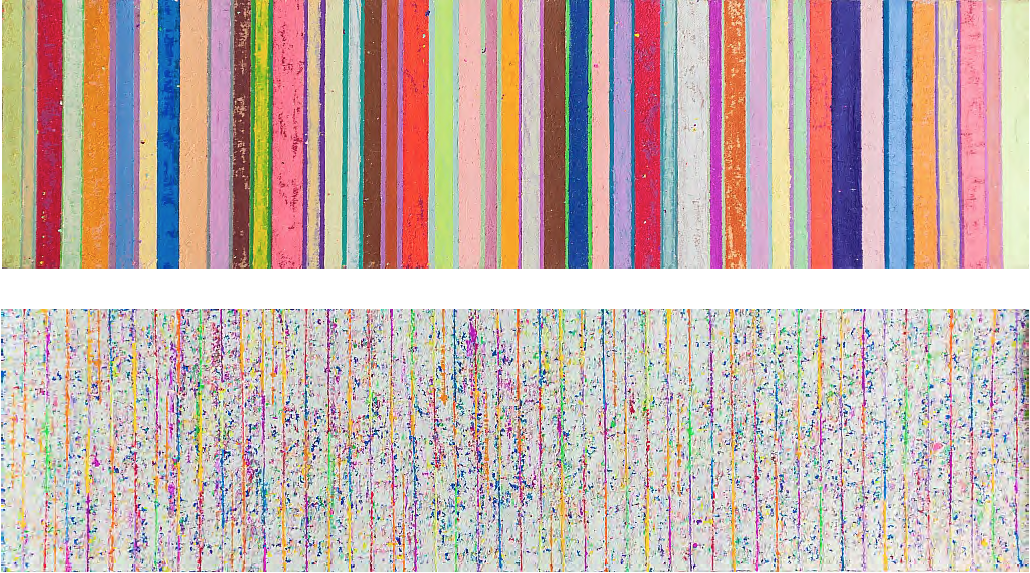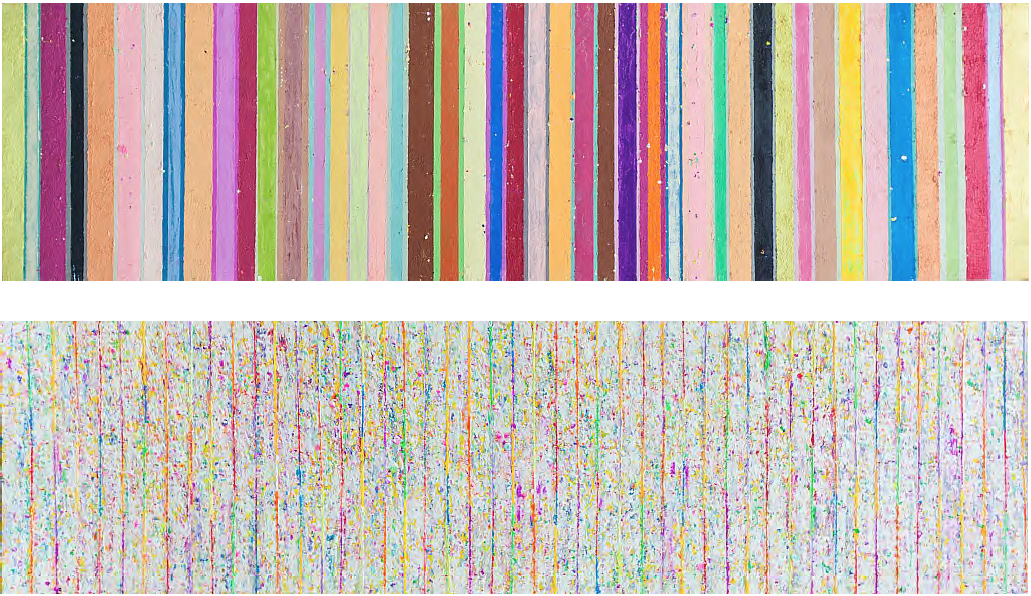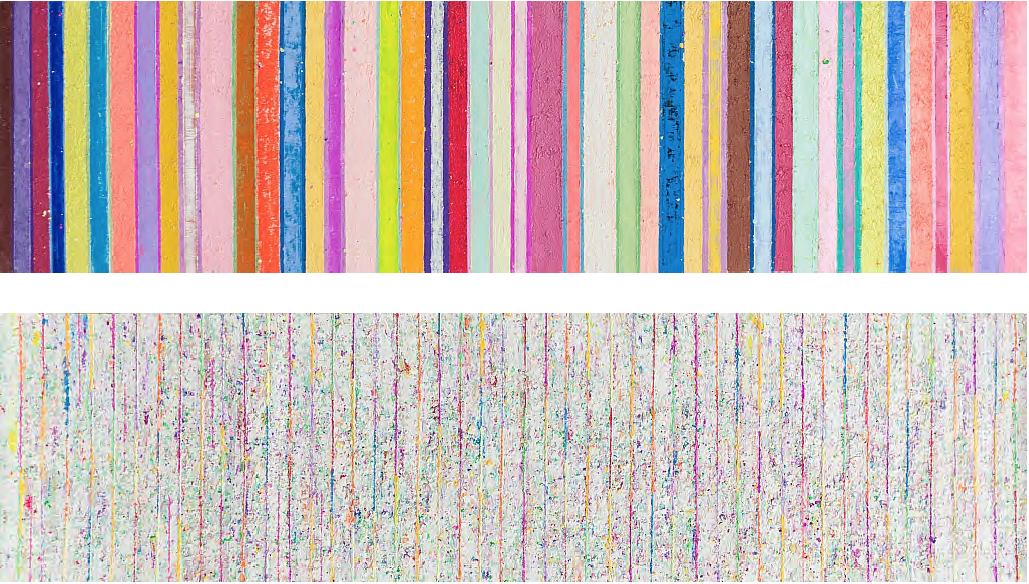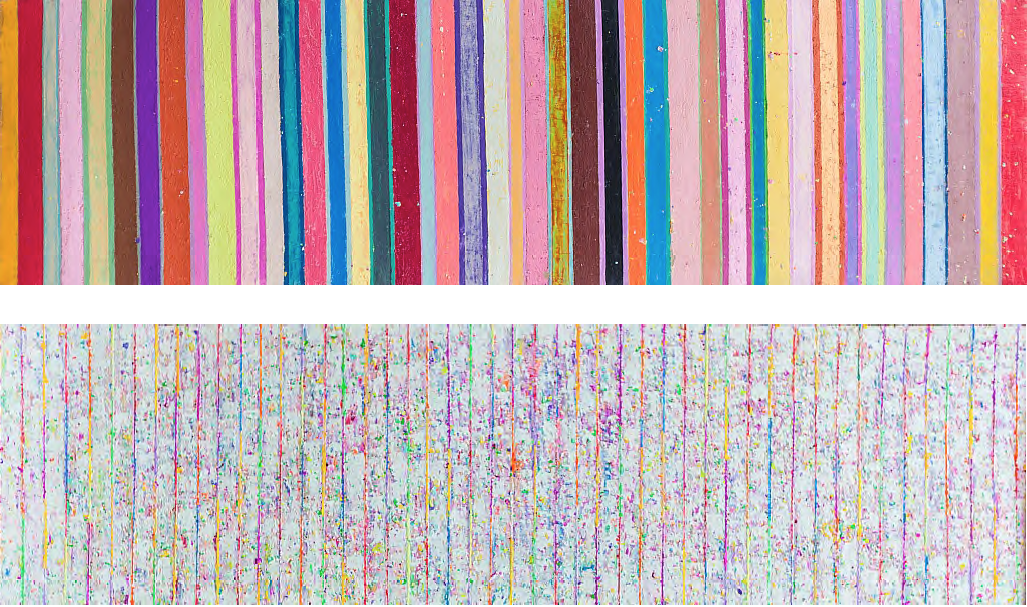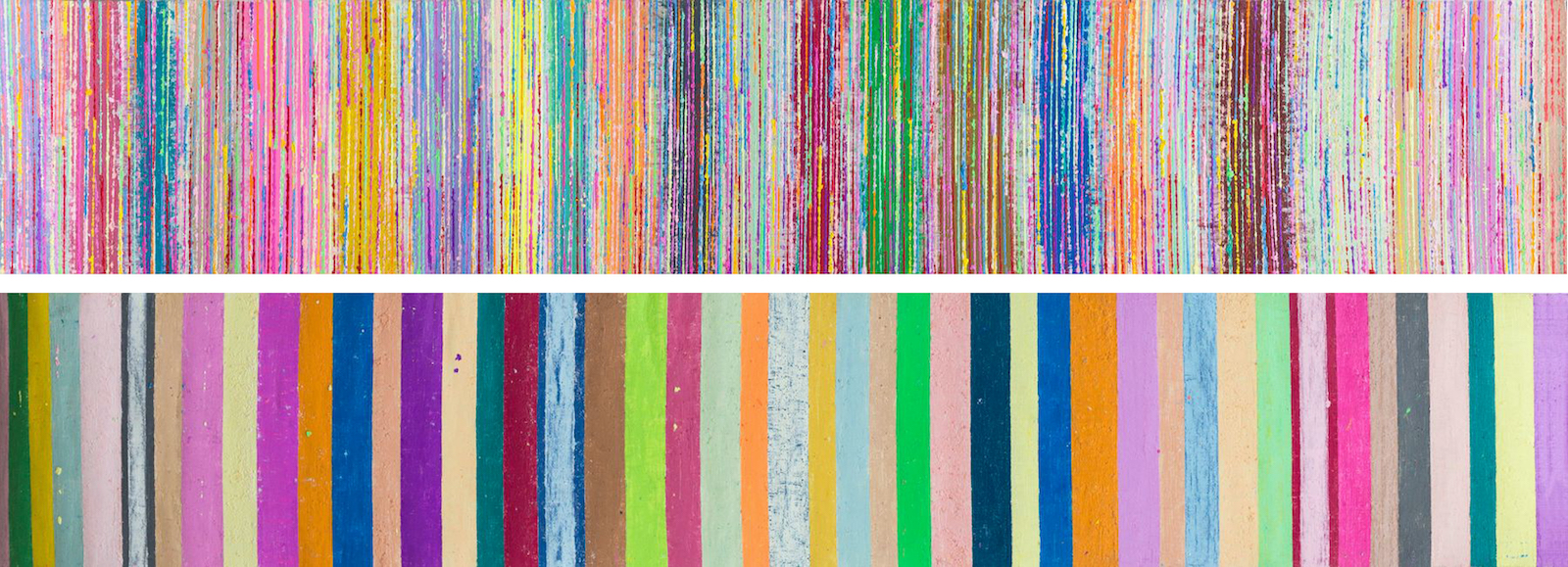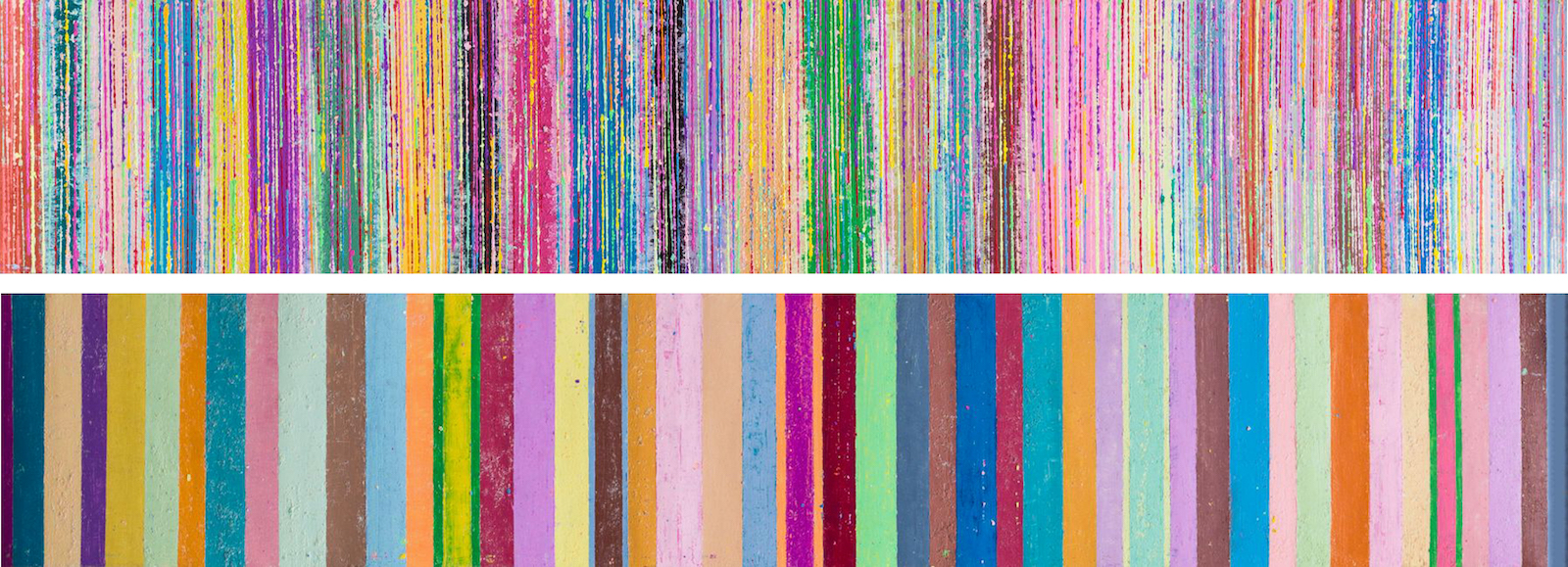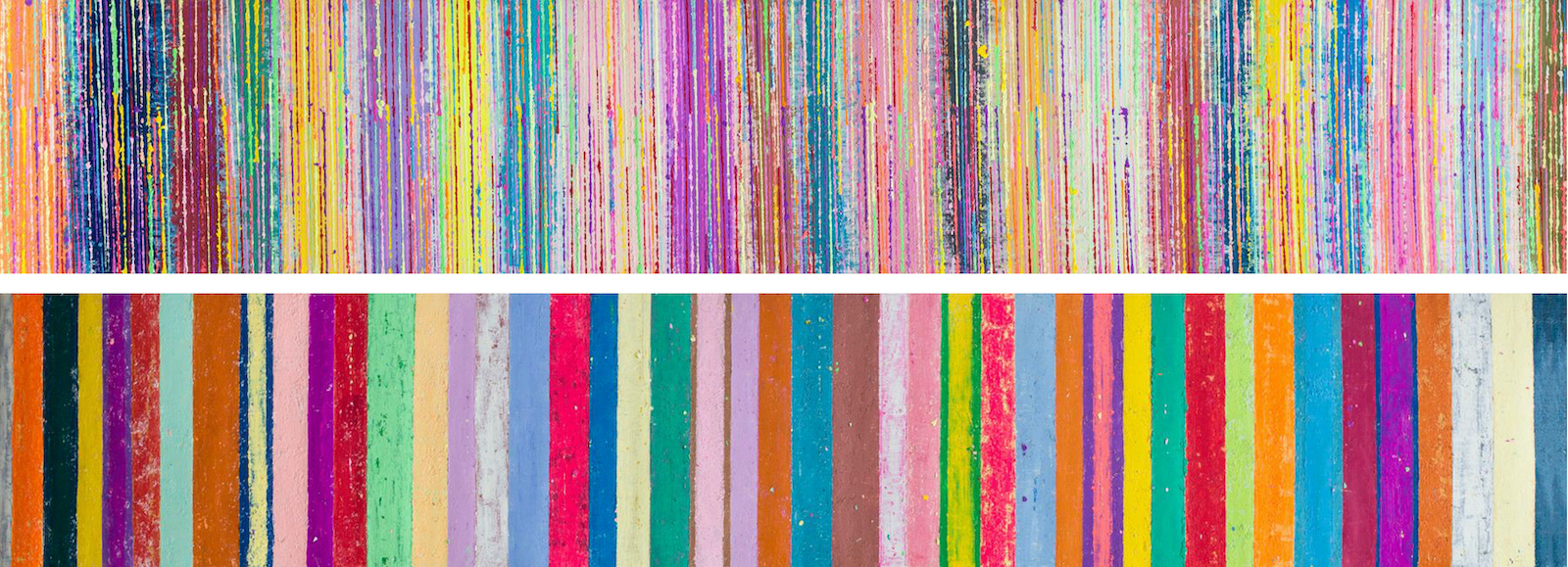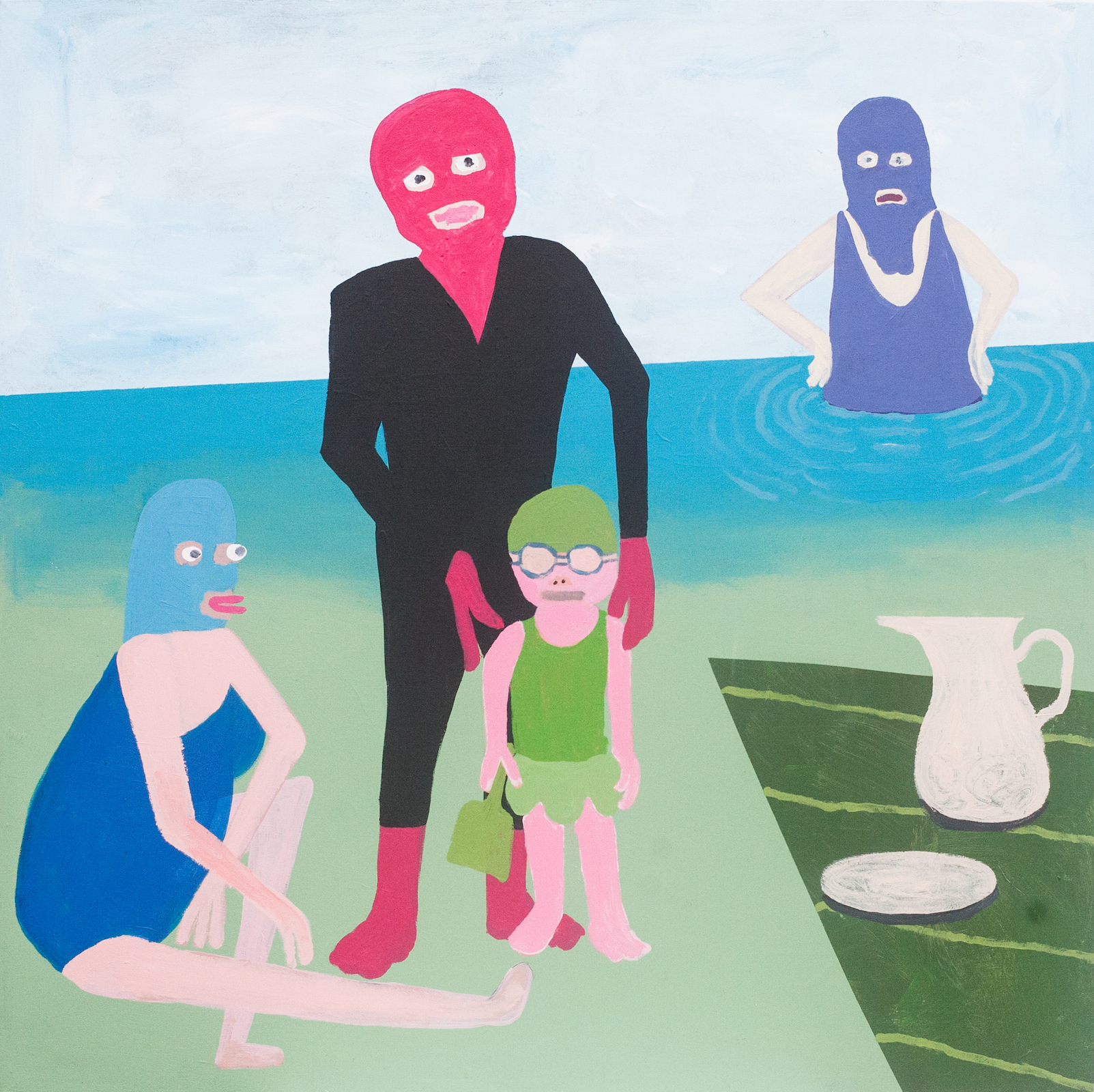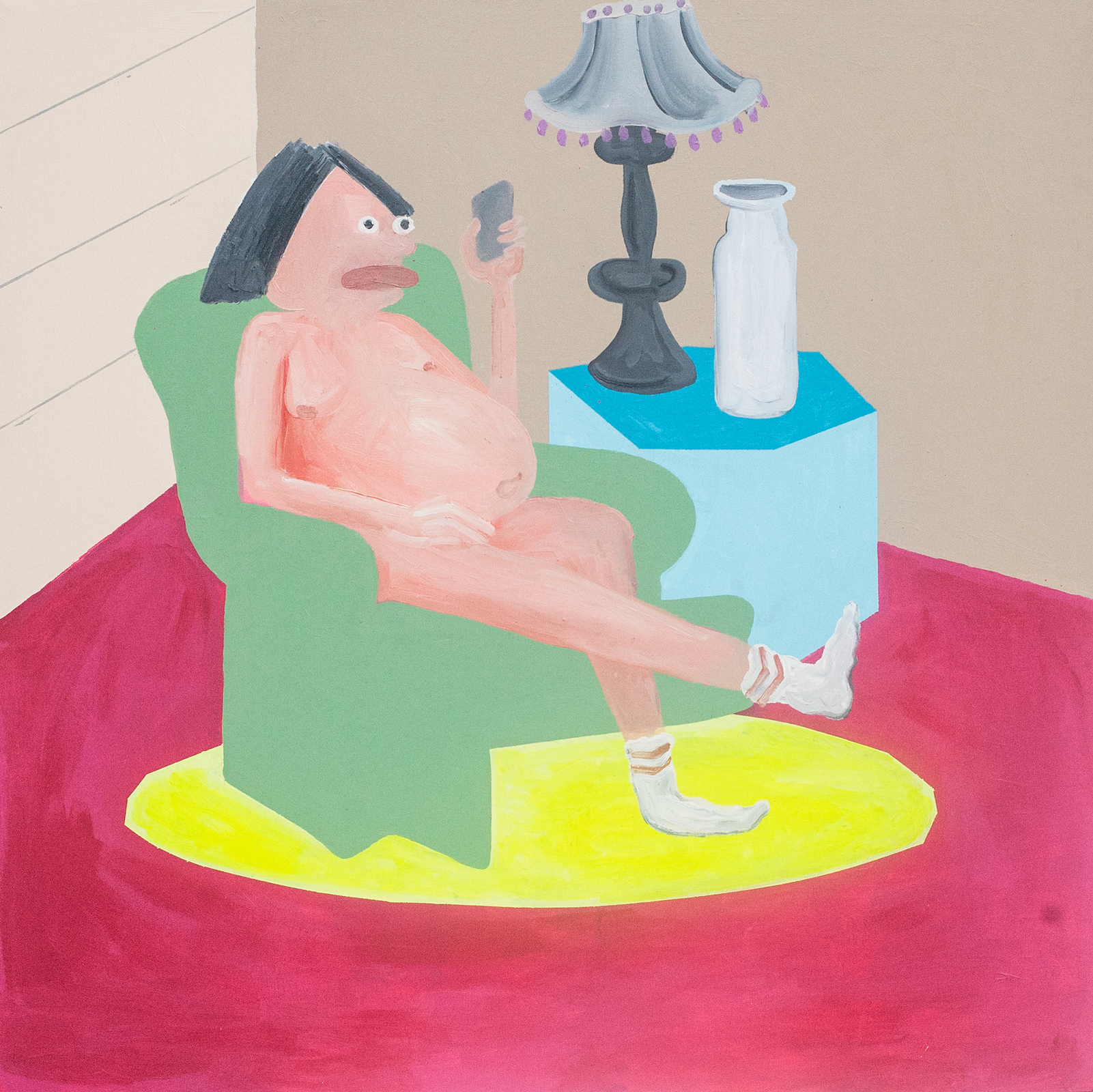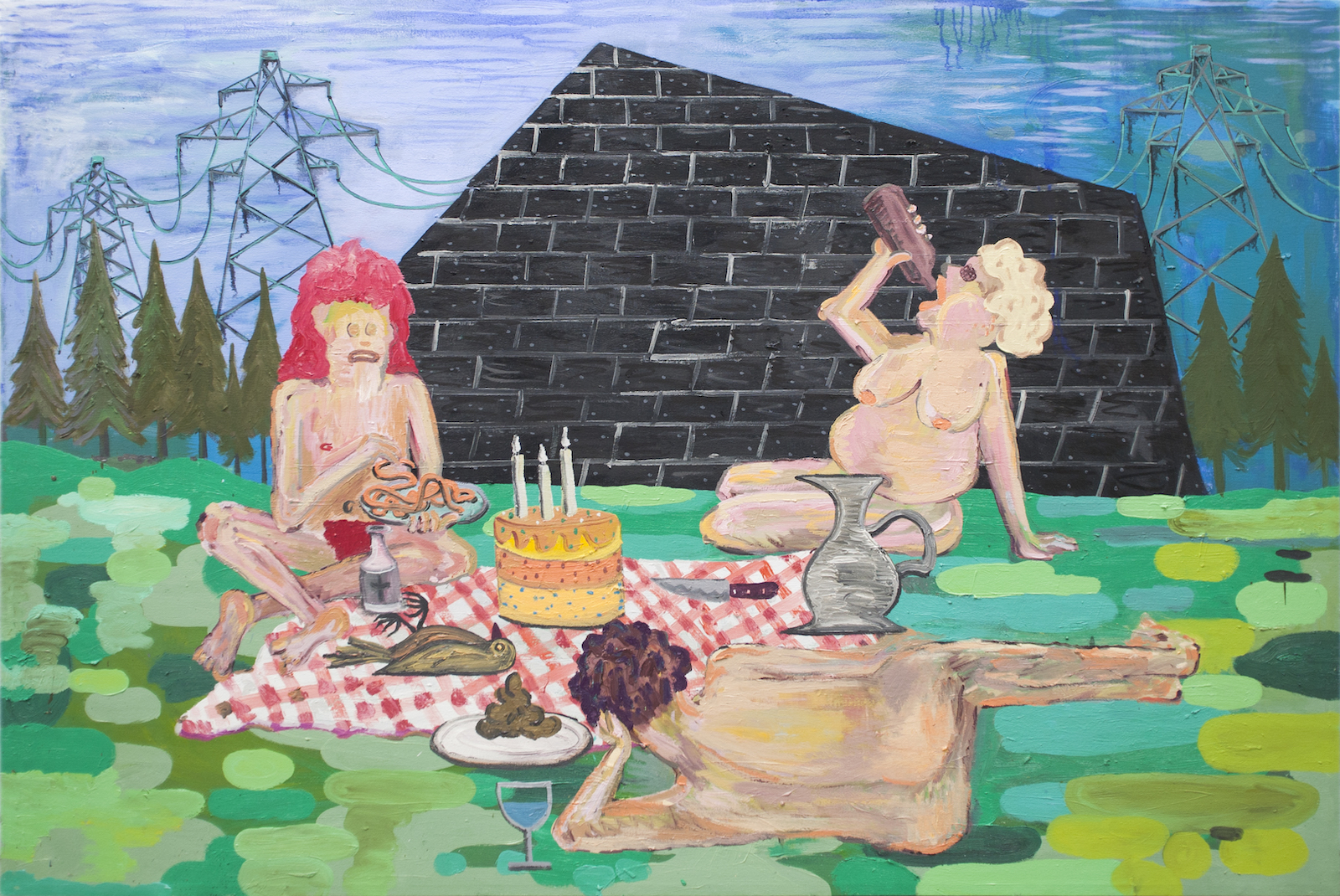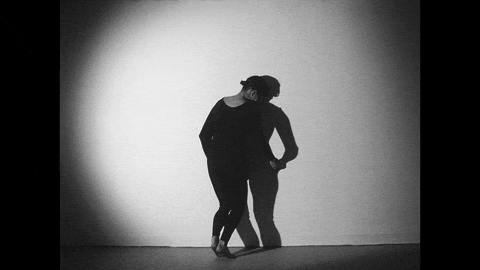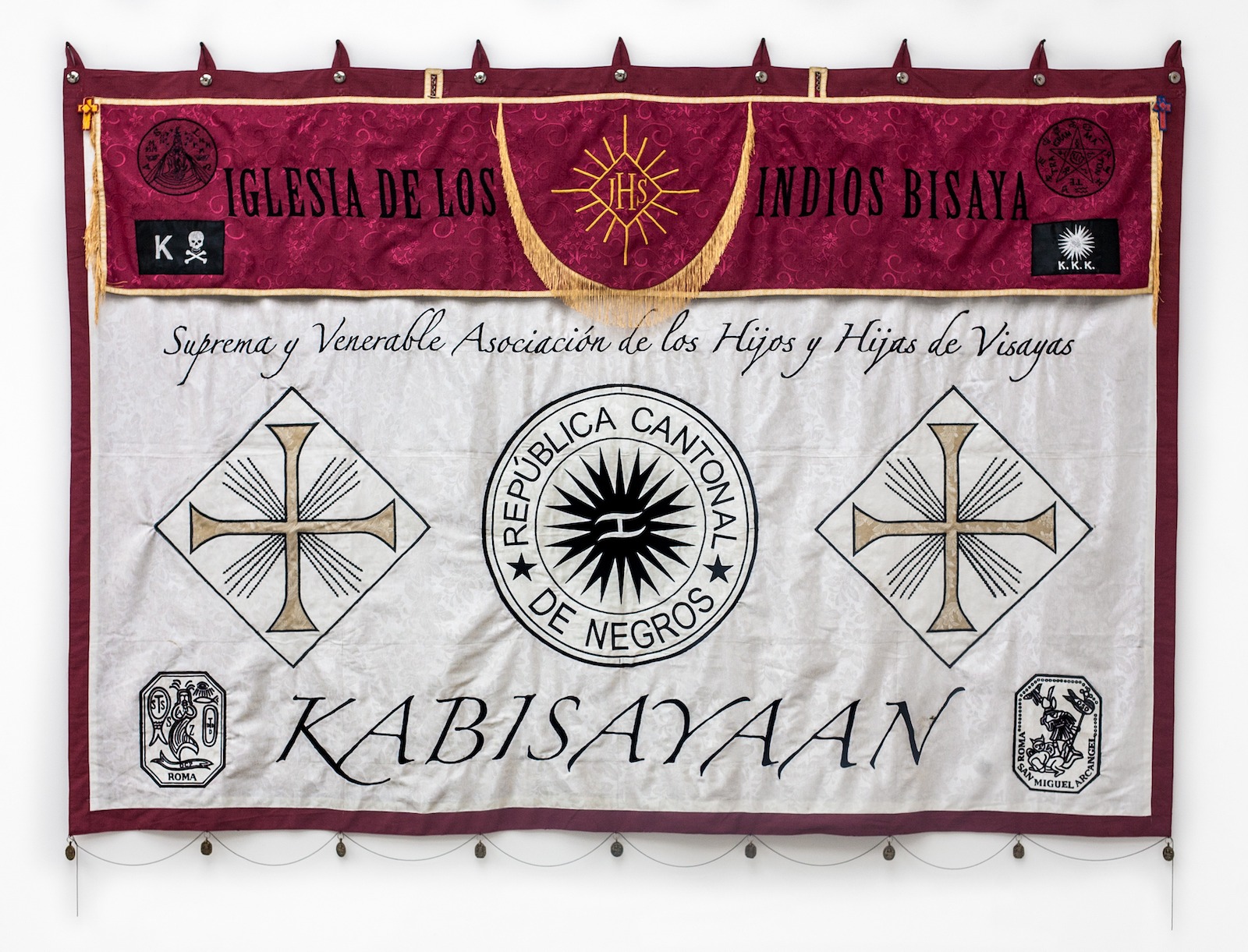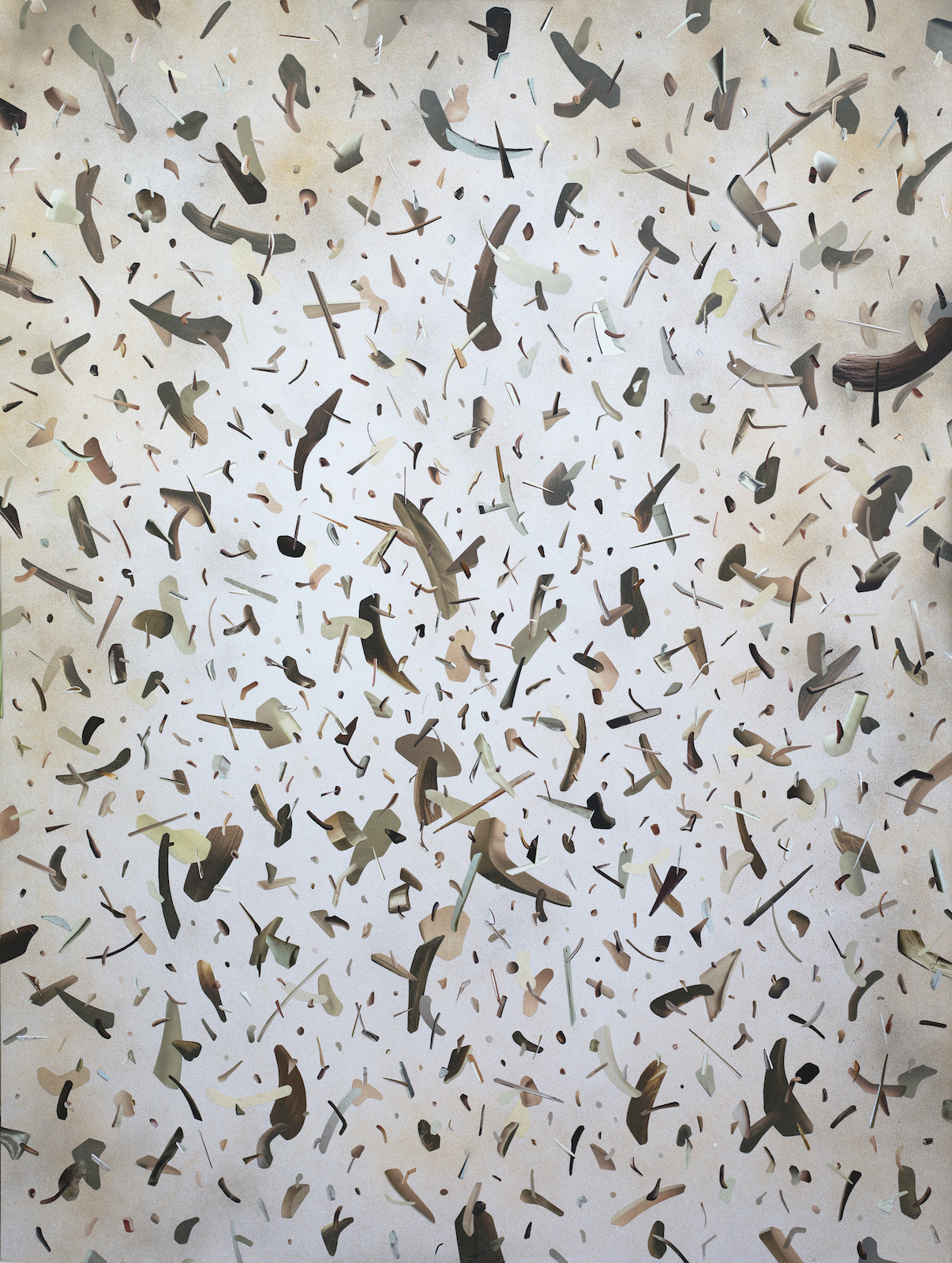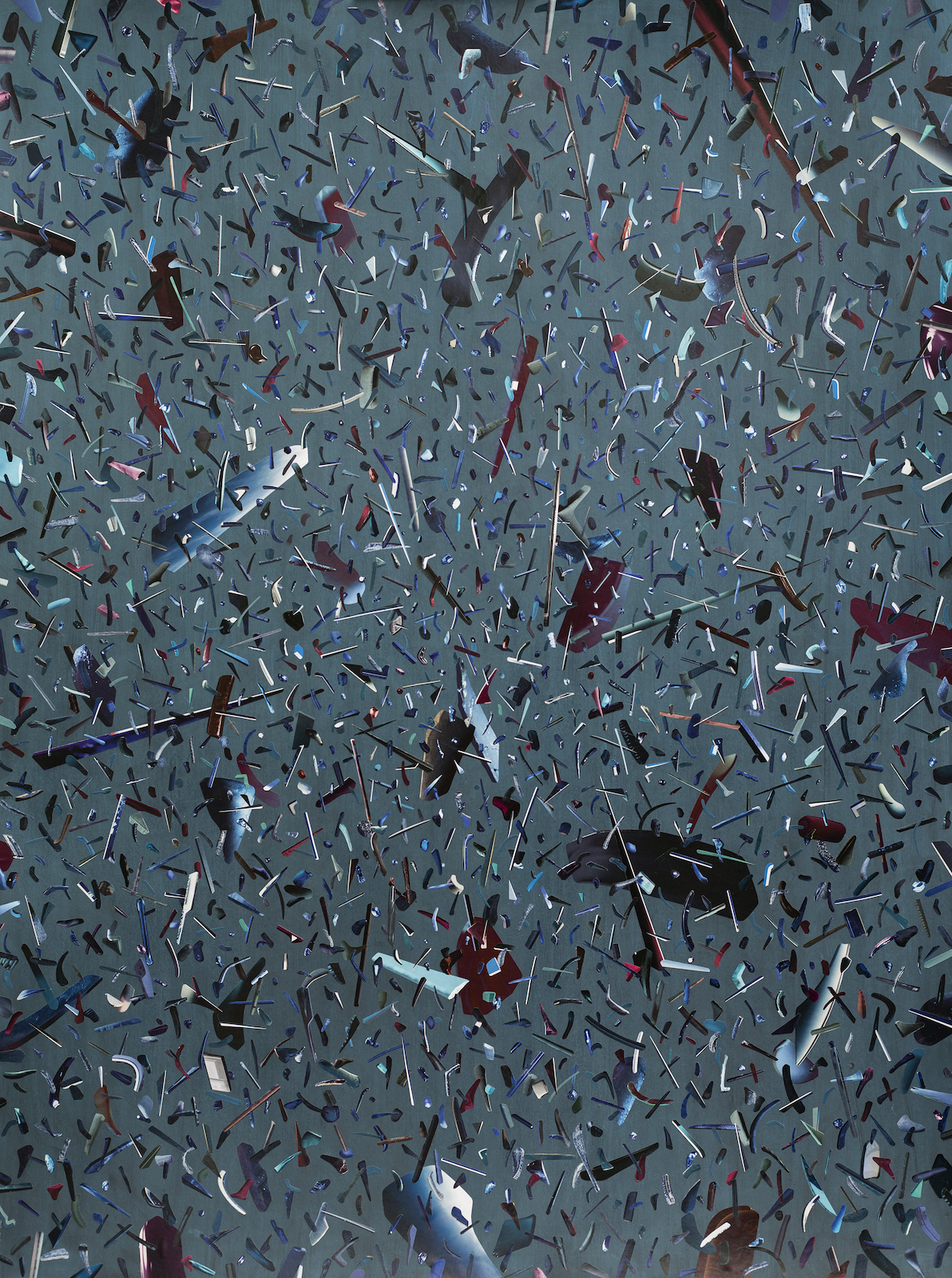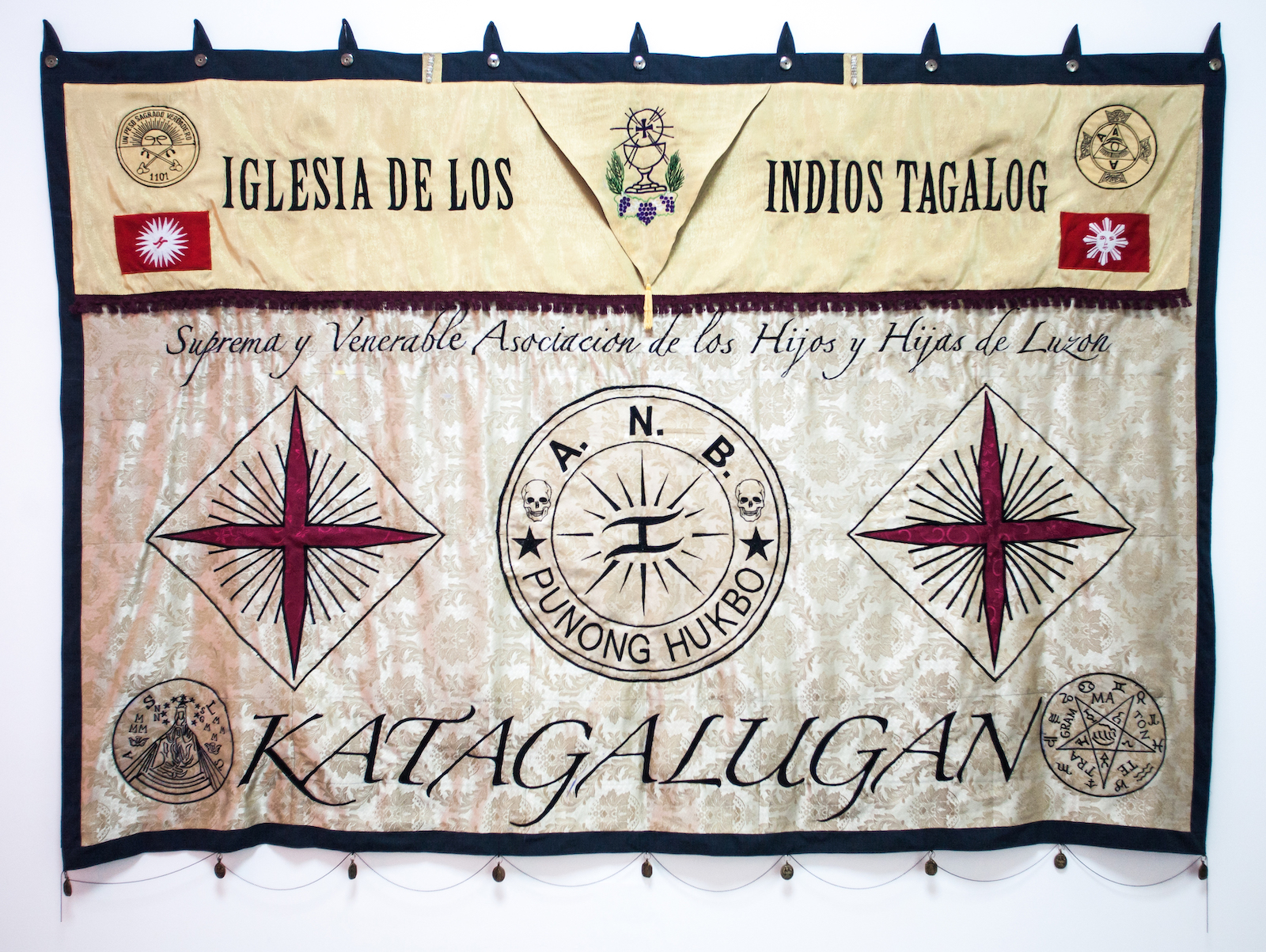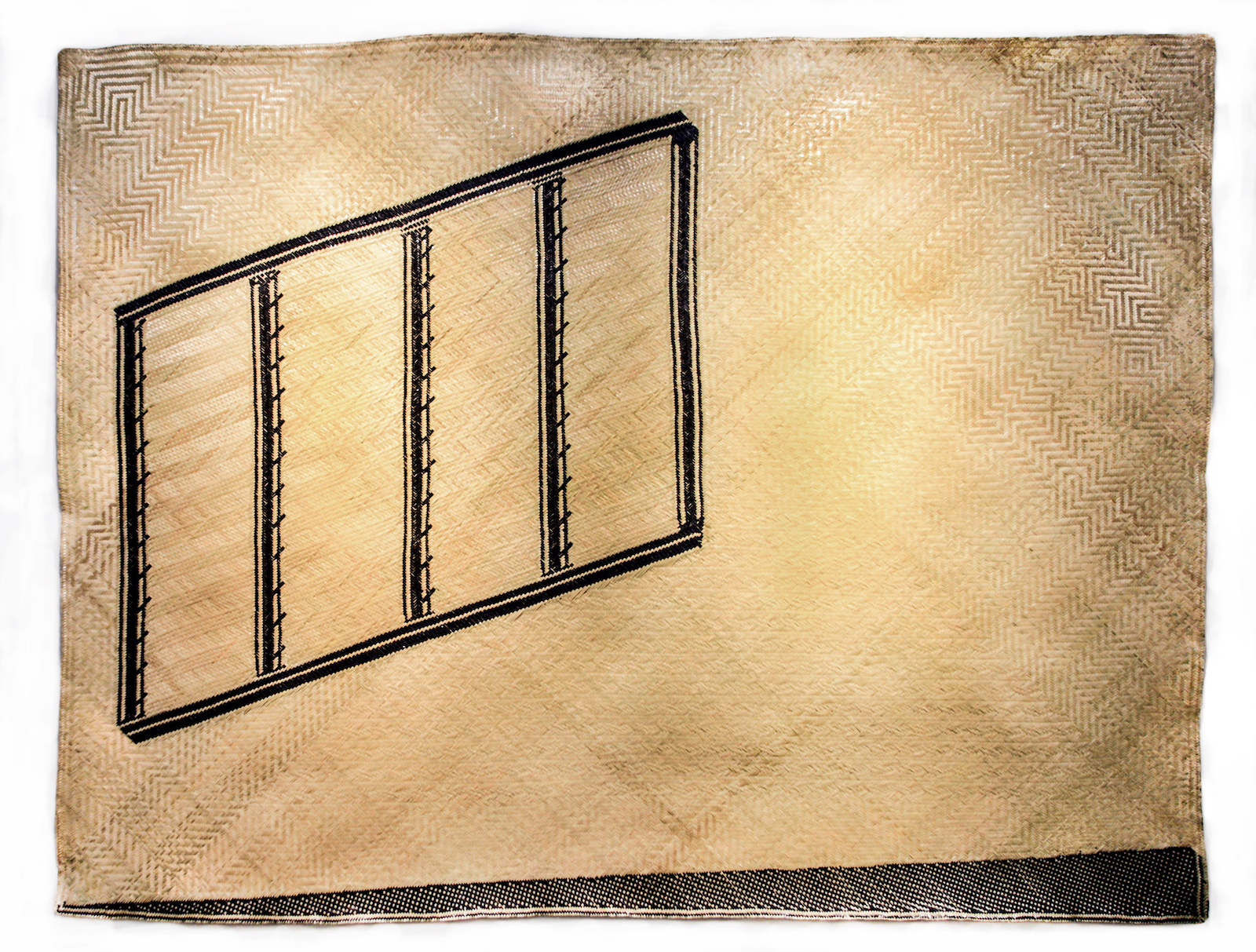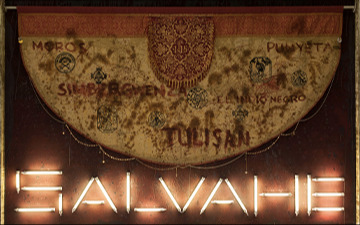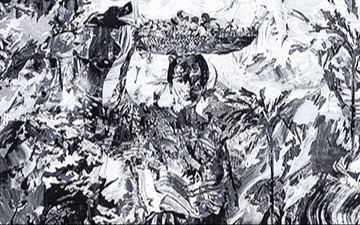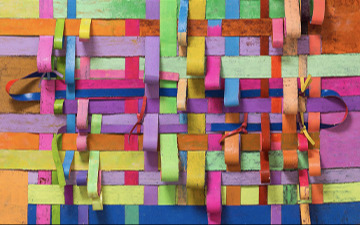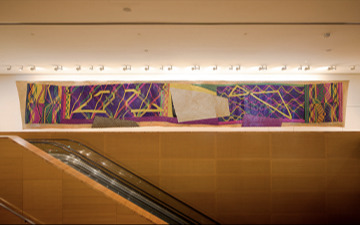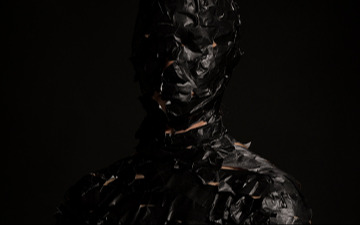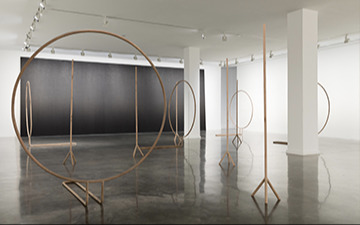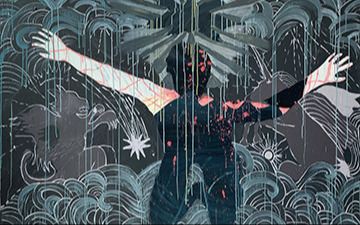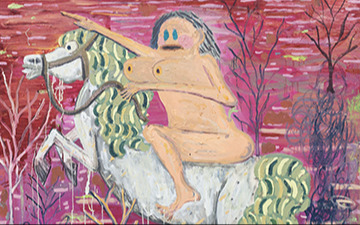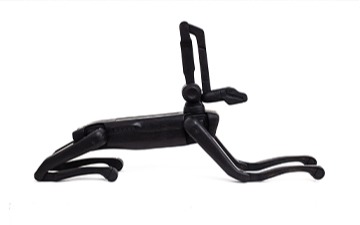
Art Basel Hong Kong
Patricia Perez Eustaquio, Mit Jai Inn, Yee I-Lann, Gina Osterloh, Chati Coronel, Pow Martinez, Gary-Ross Pastrana
Booth 1D05, Hong Kong Conventions & Exhibitions Centre
Installation Views
About
The earth rotates at 1670 km an hour, which is uncanny considering no one feels its spin. We are both familiar and unfamiliar with the way that the earth moves, changes, and shifts. From scientific accounts of finding limestone—a rock formation that can only develop under the sea—atop mountains to theories of single continents, it is difficult to talk about the earth without talking about how it has moved and changed throughout the years.
This year, Silverlens Galleries unpacks movement. How do we understand moving? As Silverlens continues to grow in size and in programming, this year, we present significant senior and historical artists: Pacita Abad, Norberto Roldan, and Mit Jai Inn; alongside a younger generation of acclaimed artists: Patricia Perez Eustaquio, Yee I-Lann, Maria Taniguchi, Chati Coronel, Pow Martinez, Gina Osterloh, and Gary-Ross Pastrana. Many of these artists’ lives have been shaped by their own movement across the globe in any way, shape, or form.
Movement can be strong, deliberate, and certain: we strive to define and fend for ourselves. Gina Osterloh’s performance Press and Outline is an act of conviction and reiteration as she tries to outline her shadow as it moves—a fleeting nod to cats play and the childhood tale of Peter Pan.
Movement is inevitable. Norberto Roldan’s large flags bring to mind the immovable act of unconsciously reconstructing memories. YEE I-Lann weaves mats referencing oral histories and heritage, reflecting on her personal move back to her home in Sabah. Patricia Perez Eustaquio’s tapestry and painting brings us back into the act of contextualizing curiosities in history, specifically the artist as overseas worker and expatriate.
We present suspended motion, acts of silent repetition and meditation alongside the global strides of Abad, Eustaquio, and Roldan. Gary Ross Pastrana’s collages, constructed over years of a collage-a-day practice from stacks of discarded magazines, are routines of observation and methodical deconstruction within time-based work. While Chati Coronel's paintings of meditations, layered and overlapping, reflect contemplation and spirituality.
The earth moves fast enough for it to remain unnoticed. We are left to navigate through our own choices, constantly moving and shifting across places, identities, memories, and experiences. Movement is both felt and unfelt, conscious and unconscious. To move is ingrained in us; what are the ways that we move? Finding limestone, moving mountains.
Norberto Roldan’s (b. 1953, Capiz, Philippines) practice is rooted in social and political issues. His installations, assemblages and paintings of found objects, text fragments and found images address issues surrounding everyday life, history and collective memory. His artistic process engages with ways in which material objects are re-appropriated in another context. He graduated with a degree in BA Philosophy from St. Pius X Seminary and took his BFA in Visual Communication from the University of Santo Tomas. He is represented in several landmark surveys like No Country: Contemporary Art for South/Southeast Asia, Solomon R Guggenheim Museum (2012); Between Declarations & Dreams: Art of Southeast Asia Since the 19th Century, National Gallery Singapore (2015); Sunshower: Contemporary Art from Southeast Asia 1980s to Now, National Art Centre Tokyo (2017); and Passion and Procession: Art of the Philippines, Art Gallery of New South Wales (2017).
Roldan founded Black Artists in Asia in 1986, a group with a socially and politically progressive practice. In 1990, he initiated VIVA EXCON (Visayas Islands Visual Arts Exhibition and Conference), the longest running biennale in the Philippines. He co- founded Green Papaya Art Projects in 2000 which remains to be the longest-running independent and multi-disciplinary platform in the country.
Patricia Perez Eustaquio (b. 1977, Cebu, Philippines) is one of the leading artists of her generation. In the past year, exhibitions included the Mind Set Art Center in Taipei and the Art Fair Philippines. A recipient of The Cultural Center of the Philippines’ Thirteen Artists Awards, she also gained recognition through several residencies abroad, including Art Omi in New York and Stichting Id11 of the Netherlands. Notable local and international shows include The Vexed Contemporary in Museum of Contemporary Art and Design, Manila; Volta Basel in Basel, Switzerland; and Credit Suisse’s Chimera in Singapore Art Museum, Singapore. She has exhibited at the Palais de Tokyo in Paris and was part of the 2016 Singapore Biennale. Patricia lives and works in Manila.
Mit Jai Inn (b. 1960, Chiang Mai, Thailand) Mit Jai Inn’s paintings come into being in his outdoor Chiang Mai studio, where he gives turns to the vibrating spectrum of sun and moonlight, with nocturnal interludes under white fluorescent. His colour- based, densely layered work defies conventional boundaries of painting, while variously enacting its multiple histories and treatments.
Studying in the late 1980s in Vienna, Mit began a vocabulary of serial forms with relational intentions, seeking to counter aspects of formal painting and its market and exhibitionary frameworks of that time. Returning to Thailand in 1992, Mit founded Chiang Mai Social Installation and has since engaged in numerous socially and politically engaged art initiatives. Today, he works from his Chiang Mai open-air studio, where multiple workstations show evidence of rigorous manual and optical labour. Tables are brimming with crushed and mixed pigment of his own making. In place of brushes, mark makers are palette knives, hands, and fingers. Canvases, often treated on both sides, stretch across floors, drape from tables and hang from metal beams. Paint has been plotted, pulled and pushed, overlayed, and scraped away. While this corporeality of colour is embedded and perceptible in Mit’s painted forms, it is also his way to channel, resist, and make offering around the conditions related to the nations, spaces, hosts and publics of his often site-specific work.
His 2018 exhibitions include: Superimposition: Equilibrium and Engagement, The 21st Biennale of Sydney; SUNSHOWER: Contemporary Art in Southeast Asia from 1980s to Today, Mori Art Museum, Tokyo; Field Recordings, Rua Red South Dublin Art Center, Dublin, Ireland; and These Painter’s Painters, Roh Projects, Jakarta, Indonesia.
Yee I-Lann (b. 1971, Kota Kinabalu, Malaysian Borneo) lives and works in Kota Kinabalu. Her art practice is to speculate on issues of culture, power, and the role of historical memory, in our social experience. Exploring such layers of meaning necessitates an extensive and multi-layered visual vocabulary drawn from research, historical references, popular culture, archives, and everyday objects. Yee graduated in 1993 from the University of South Australia in Adelaide, Australia, with a Bachelor of Arts (Visual Arts) with a major in Photography and a minor in Cinematography. She has in recent years incorporated indigenous media, such as batik, as well as bamboo, mengkuang and pandanus weaving into her artwork. Yee has exhibited extensively worldwide and her artworks are in major public, corporate, and private collections.
Gina Osterloh’s (b. 1973, Texas, USA) photography, film, and performance based art work depicts mark-making and her own body traversing, tracing, and puncturing photographic space in a quest to interrogate the boundaries of a body and expand notions of identity. Osterloh’s printed photographs depict large scale photo tableaux environments as well as drawing on photo backdrop paper, that expand our understanding of portraiture and what photography can be. Symbolic themes and formal elements such as the void, orifice, and the grid, in addition to a heightened awareness of color and repetitive pattern appear throughout Osterloh’s oeuvre. Osterloh cites her experience of growing up mixed-race in Ohio as a set of formative experiences that led her to photography and larger questions of how a viewer perceives difference.
Solo exhibitions include Gina Osterloh at Higher Pictures; Slice, Strike, Make an X, Prick! at François Ghebaly Gallery; Nothing to See Here There Never Was and ZONES at SILVERLENS; Group Dynamic at Los Angeles Contemporary Exhibitions (LACE), and Anonymous Front at Yerba Buena Center for the Arts. Group exhibitions include Multiply, Identify, Her at the International Center of Photography in New York City, Ours is a City of Writers at the Barnsdall Los Angeles Municipal Art Gallery; Energy Charge: Connecting to Ana Mendieta at ASU Museum, Demolition Women curated by Commonwealth & Council at Chapman University and Fragments of the Unknowable Whole Urban Arts Space OSU. Her work has been reviewed in The New Yorker, Art in America, The Brooklyn Rail, Contemporary Art Daily, Hyphen Magazine, Art Asia Pacific, Asian Art News, Art Papers, Artforum Critics Pick, Art Practical, and KCET Artbound Los Angeles. Awards include a Fulbright in the Philippines, a Woodstock Center of Photography residency, and a Create Cultivate Grant with the LA County Arts Commission and LACE. Gina Osterloh is an Assistant Professor in the Department of Art at The Ohio State University
Maria Taniguchi (b. 1981, Dumaguete, Philippines) won the Hugo Boss Asia Art Award in 2015 and was a LUX Associate Artist in 2009. Recent exhibitions include the 12th Gwangju Biennale: Imagined Borders, Gwangju Biennale Exhibition Centre, South Korea (2018); 21st Biennale of Sydney, SUPERPOSITION: Equilibrium & Engagement, Museum of Contemporary Art, Australia (2018); History of a vanishing present: A prologue, the Mistake Room, Los Angeles (2016); Afterwork, Para Site, Hong Kong (2016); Globale: New sensorium, ZKM Centre for Art and Media, Karlsruhe, Germany (2016); The vexed contemporary, Museum of Contemporary Art and Design, Manila (2015); and the 8th Asia Pacific Triennial of Contemporary Art, QAGOMA, Brisbane (2015). Her work is held in a number of collections including the M+ Museum, Hong Kong; the Burger Collection, Hong Kong; Kadist Art Foundation, San Francisco; QAGOMA, Brisbane; and the K11 Art Foundation, Shanghai.
Chati Coronel (b. 1970, Manila, Philippines) arrived at painting after completing a Degree in Architecture in 1991. She has since developed a distinct practice of deeply layering painted figures, using negative space to contain gestures and landscapes to explore human consciousness and spirit. Coronel had her first one-woman show at Manila's seminal artist-run space, Surrounded by Water, in 1999. She was the recipient of a grant for artist residency at The Vermont Studio Center in 2000 and was the first Filipino artist chosen to participate in the Florence Biennale in 2005. Coronel lives and works in Manila.
Pow Martinez (b. 1983, Manila, Philippines) is a recipient of the Ateneo Art Awards for his 1 Billion Years exhibition at West Gallery, Philippines. He exhibits internationally and has worked with different media, including sound. His recent group exhibitions include Art Basel Hong Kong 2018 with Silverlens; Art Taipei 2017; WASAK! Reloaded (2016) in Arndt, Singapore; and WASAK! (2016) in Arndt, Berlin. Martinez has also held a number of solo shows in major galleries in Manila, the most recent of which is Techno-Utopian (2017) in SILVERLENS. Early in 2018, Martinez had his first solo exhibition in Indonesia. Titled Aesthetic Police, the exhibition is an outcome of his month-long residency program at OPQRStudio in Bandung.
Gary-Ross Pastrana (b. 1977, Manila, Philippines) art has been one of the most persistent in terms of combining concepts with objects. His conceptual pieces, although loaded with poetic intensity, remain unobtrusively subtle and even almost quaint in their appearance. Coiled or folded photographs, his woven tales from found pictures in the internet, the sawed off parts of a boat shipped to another gallery, his shirt tied to a pole to commensurate a flag—these are the slightest of turns Gary-Ross has his objects make to create a new text within. Born in 1977 in Manila, he received his Bachelor’s degree in Painting from the University of the Philippines and was handed with the Dominador Castañeda Award for Best Thesis, and was granted with residency programs in Japan and Bangkok.
Gary-Ross Pastrana received the CCP Thirteen Artists Award in 2006. He has shown at the Singapore Art Museum, Metropolitan Museum of the Philippines, and the Jorge B. Vargas Museum. He was the country’s representative for the New Museum in The Ungovernables: 2012 New Museum Triennial in New York. He was part of the Aichi Triennale in 2010 and the Busan Biennale in 2008. He is one of the co-founders of Future Prospects Art Space in Cubao, Philippines, and has regularly curated for shows both here and abroad.
Works
